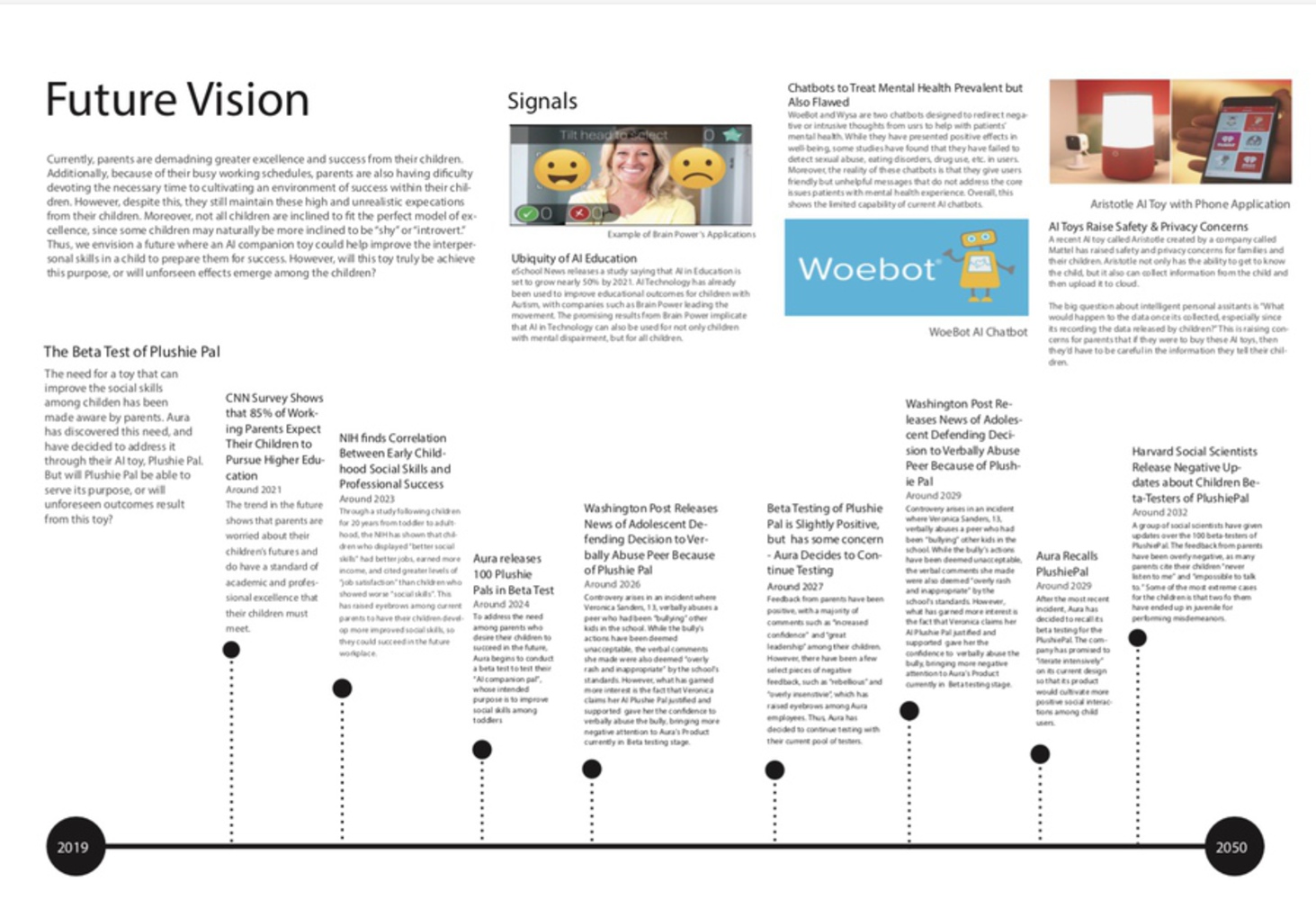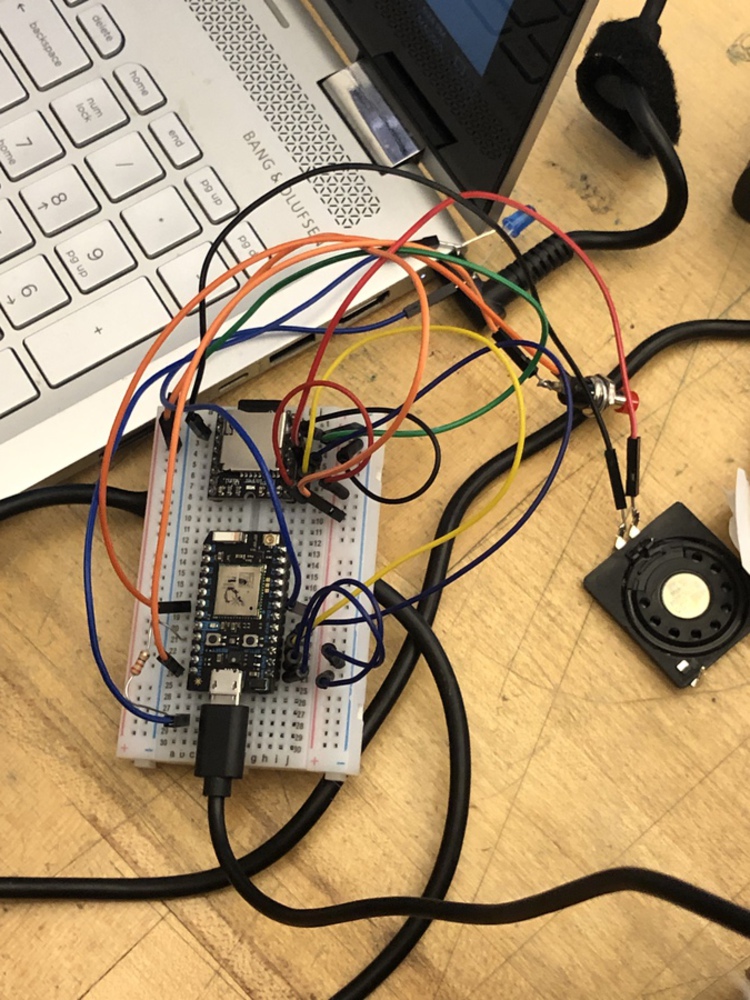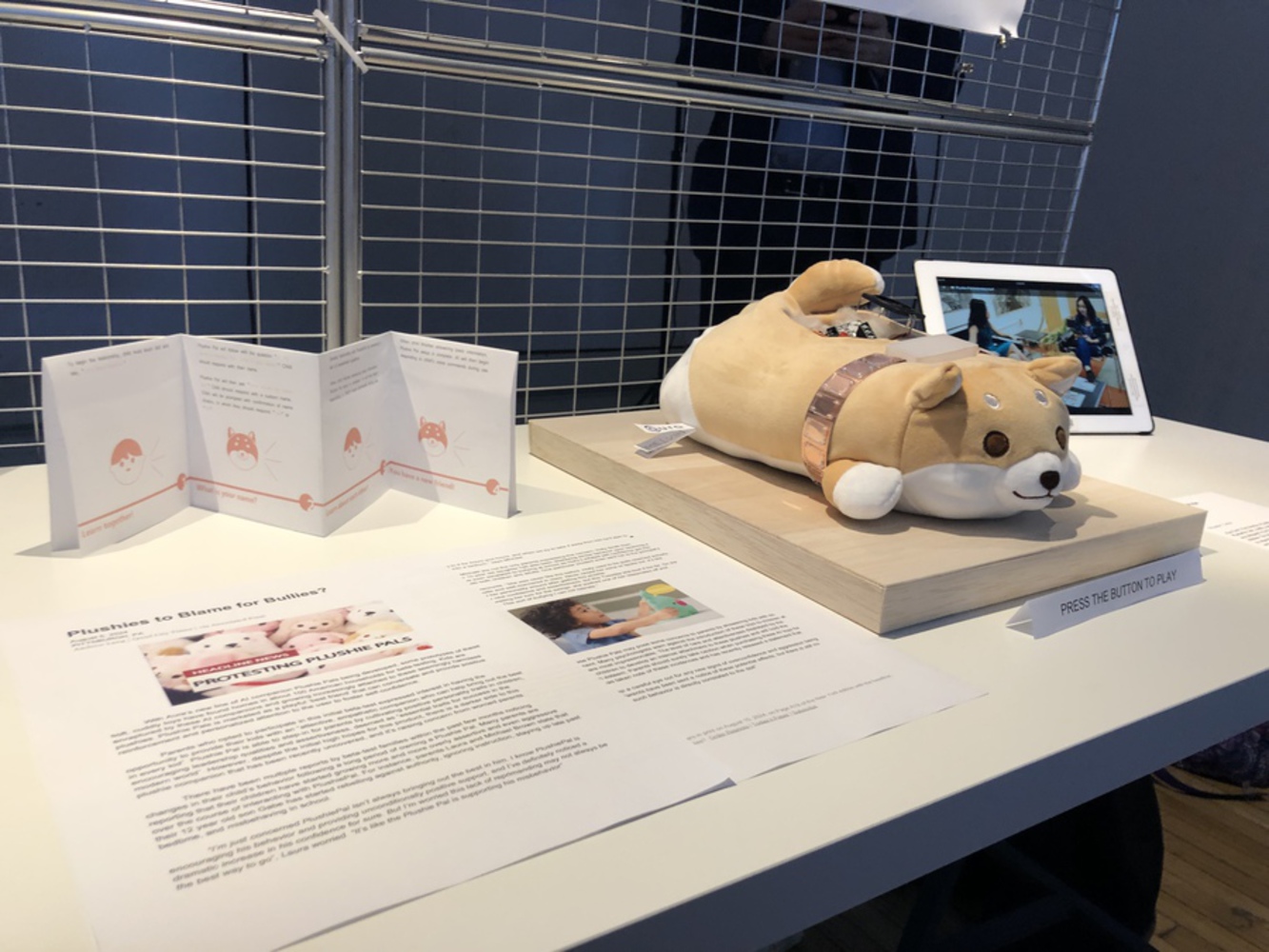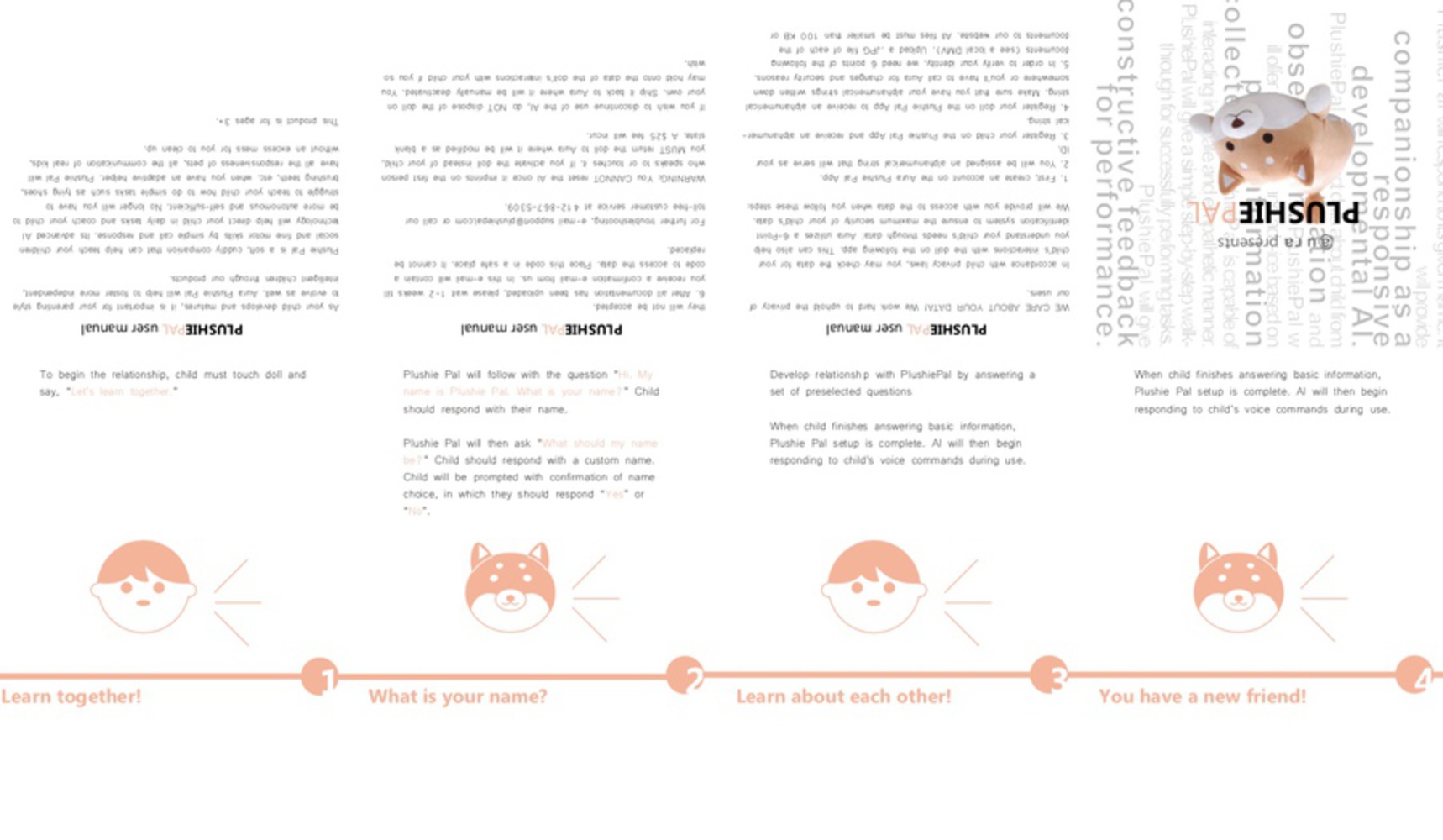Narrative
Our project’s goal was to envision and investigate the effects of AI technology on the social skills of children in a future where companion AI technology is likely to become ubiquitous.
We envision a future where the global job market is becoming increasingly competitive- having stellar grades and long lists of extracurriculars will no longer suffice for success. The social skill of networking, which was never taught in school, has become imperative to succeeding in the working world. Thus, parents are looking for ways to improve this skill within their children.
To address this need, Aura Tech had created a special plush released for beta testing that would help children develop social skills to succeed in higher education and post-graduation life. This adaptive plush picks up on natural human speech patterns to model how to empathize and listen to others and create a unique bond with its owner as a tutor and friend. Unfortunately, after 5 years of observing oddly aggressive long-term behavioral development in the children who had the beta plush toys, Aura Tech had recalled the product. Plans are still in the works for another form of machine learning plush toys that do not produce adverse effects, but PlushiePal is permanently obsolete.






